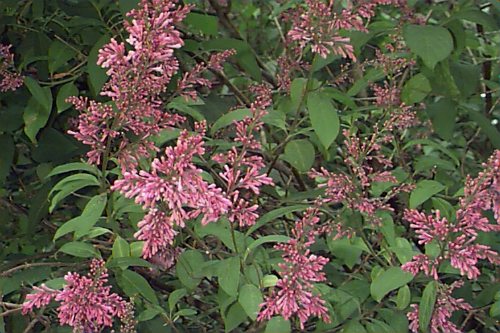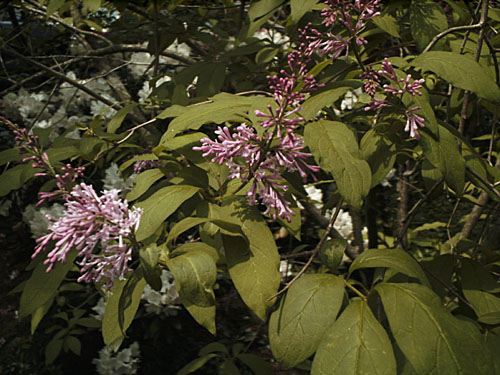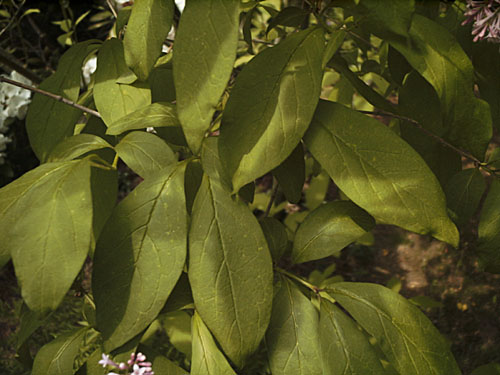Syringa villosa
Late Lilac
Oleaceae
ExpandHabitat
- native to china
- hardy to zone 3
Habit and Form
- an deciduous shrub
- dense, rounded habit
- ascending branches, erect
- 6' to 10' tall
- 4' to 10' wide
- medium texture
- moderate growth rate
Summer Foliage
- opposite leaf arrangement
- simple, deciduous leaves
- oblong, leaf shape
- 2" to 7" long
- 1" to 2.5" wide
- entire leaf margin
- dark green leaf color
Autumn Foliage
- poor fall color
Flowers
- purplish-white flowers
- fragrant
- blooms in early June
- borne in pyramidal panicles
- 4" to 8" long
- showy
Fruit
- brown capsules
- capsules located at the terminal tips of branches
- should be removed
Bark
- not ornamentally important
Culture
- full sun
- transplants easily
- prefers well-drained, slightly acidic soil
- prune after flowering
- cut off old flower heads
- somewhat resistant to mildew, scales and borers
Landscape Use
- specimen
- for fragrance
- small groupings
- for flowering effect
- for high quality foliage and form
Liabilities
- not many things to knock this plant for
- flower buds emerge early and can get hit by a late frost
ID Features
- dehiscent capsules
- purplish-white, fragrant flowers
- opposite leaf arrangement
- leaves are dark green with a cordate leaf shape
- imbricate. brown buds
Propagation
- by cuttings
- by seed
Cultivars/Varieties
Syringa villosa has been crossed with S. reflexa to produce the S. x prestoniae hybrids (the "Preston Lilac Hybrids"). These plants are extremely hardy, to USDA zone 3, and are becoming common in commerce. They resemble their S. villosa parent in most visible respects, and include:
'Agnes Smith' - This selection out of New Hampshire blooms with white fragrant flowers late in the lilac season. It is an upright grower to 8' tall and wide.
'Donald Wyman' - Rated highly be observers as perhaps the best Preston hybrids, this plant sports profuse panicles of purple buds that open to reveal red-purple blooms. It blooms later than S. vulgaris-types, thus extending the season. The plant grows densely upright to 10' tall with a more narrow spread.
'James MacFarlane' - Another New Hampshire introduction, this common commercial selection is a fine pink-flowered lilac. The clear pink blooms are single and produced heavily on a 8' tall plant that grows with an upright habit. Like all Preston hybrids, the plant is very hardy.
'Minuet' - This S. villosa hybrid is most notable for its slower, more restrained growth habit. It grows densely to 8' tall and 6' wide after many years and does not sucker as much as other lilacs. The blooms are a light white-pink, and the handsome dark green leaves densely clothe the stems.
'Miss Canada' - Experts consider this hardy hybrid to be among the best pink lilacs. It grows upright to 10' tall and wide, and in time can form a large rounded shrub or small tree. The flowers appear later than S. vulgaris-types and are bright pink with a good fragrance.


